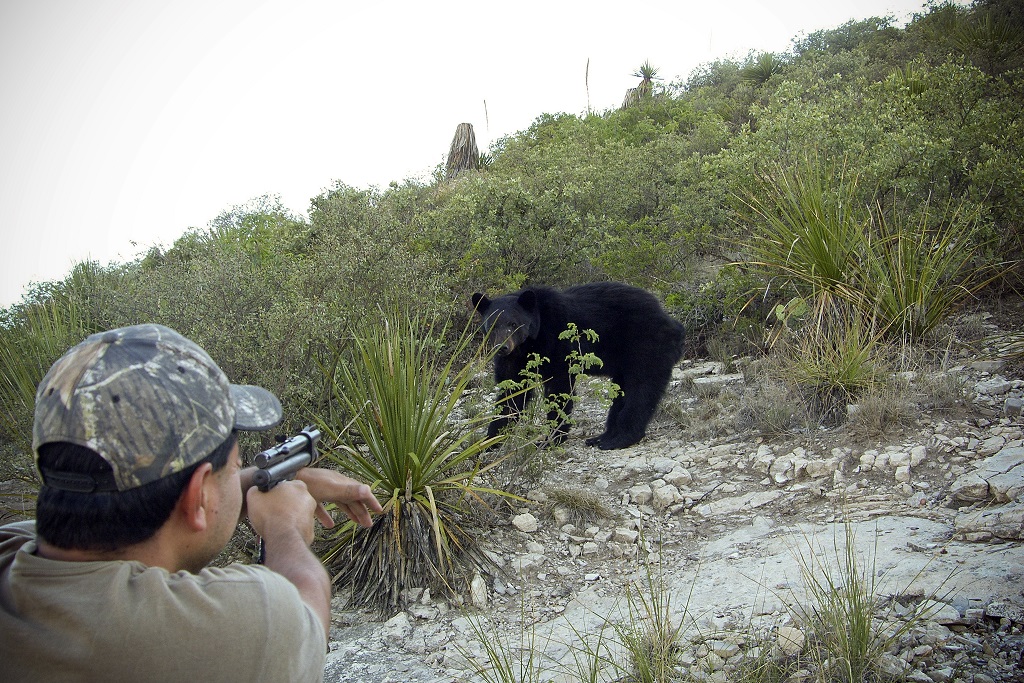Safety: When Face-to-Face with a Black Bear

Mexican researcher preparing to shoot tranquilizer at bear. Image courtesy the Government of Mexico.
This is Passport to Texas
Black bears are returning to Texas after a long absence. No need for concern, though. While they aren’t cuddly teddy bears, they aren’t ferocious 800 pound grizzlies, either.
07—Black bears are much smaller animals. A very, very big black bear in Texas is 400 pounds.
They’re still big wild animals –emphasis on wild. Black bears keep a low profile, but Texas Parks and Wildlife mammalogist, Jonah Evans, says it is possible to come into contact with one because—well—they’re a lot like us.
13—Bears are a masterful generalist; this is where they can end up causing a problem with people, because they love human food. You know, humans are generalists, too. We can eat nuts and berries and meat and bears do as well.
Bears follow the food, making it wise when camping to keep your food at least 100 feet away from your sleeping area. However, if you do come face-to-face with one of these mammals…
24—What you want to watch out for is any kind of predatory behaviors, which are extremely rare. Most often what people think is threatening is a bear might stand up on its hind legs, growl, slam its feet down on the ground, pop its jaw – what we call ritualistic behaviors. And what that bear is doing is trying to communicate in as clear a way as it can that we are invading its territory, and just to back away.
Jonah Evans says attacks on people are rare, and primarily by solitary males, not females with cubs.
The Wildlife and Sport Fish Restoration program supports our series and funds diverse conservation projects in Texas. For Texas Parks and Wildlife, I’m Cecilia Nasti.


 Passport to Texas is a
Passport to Texas is a  Passport to Texas is made available by:
Passport to Texas is made available by: